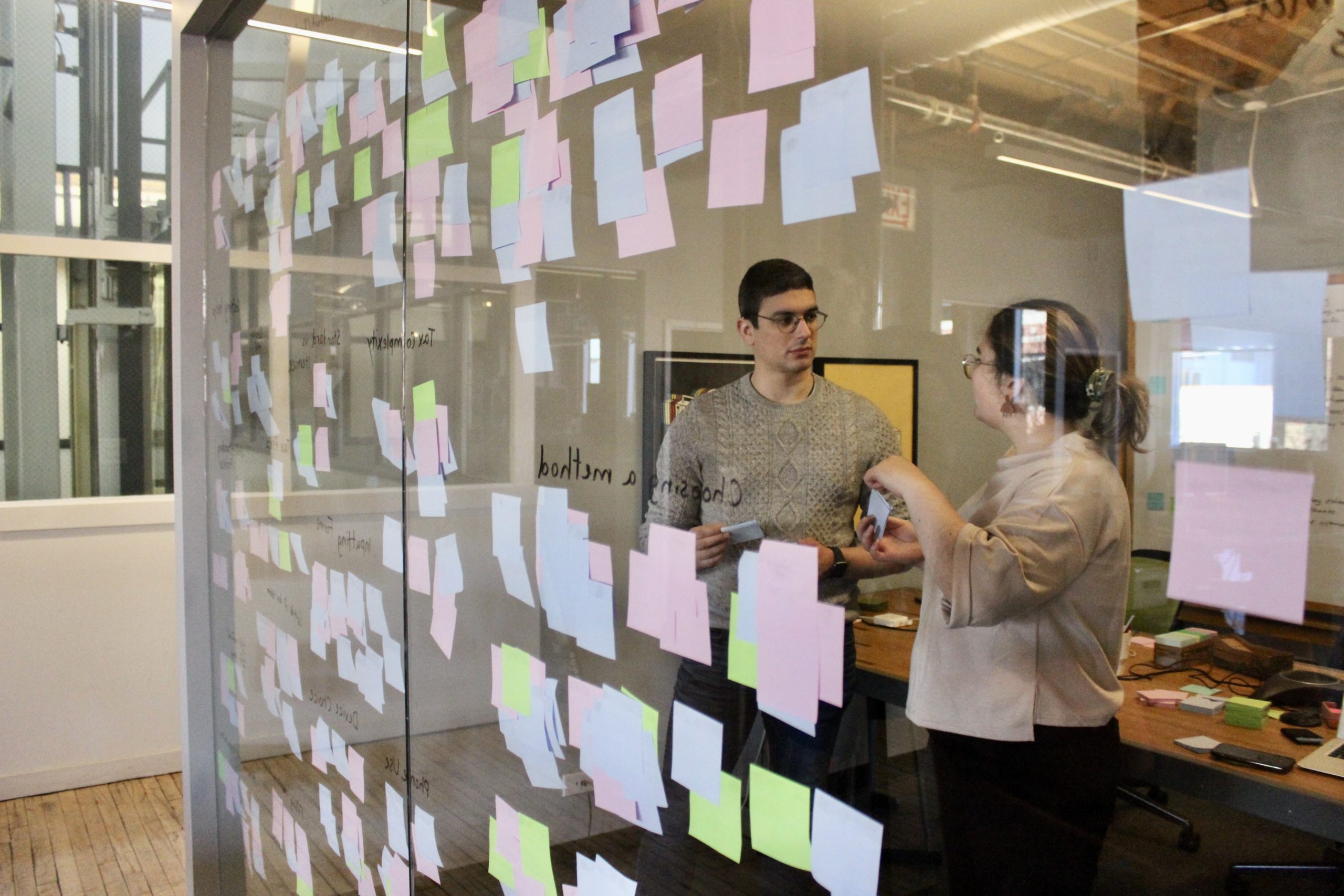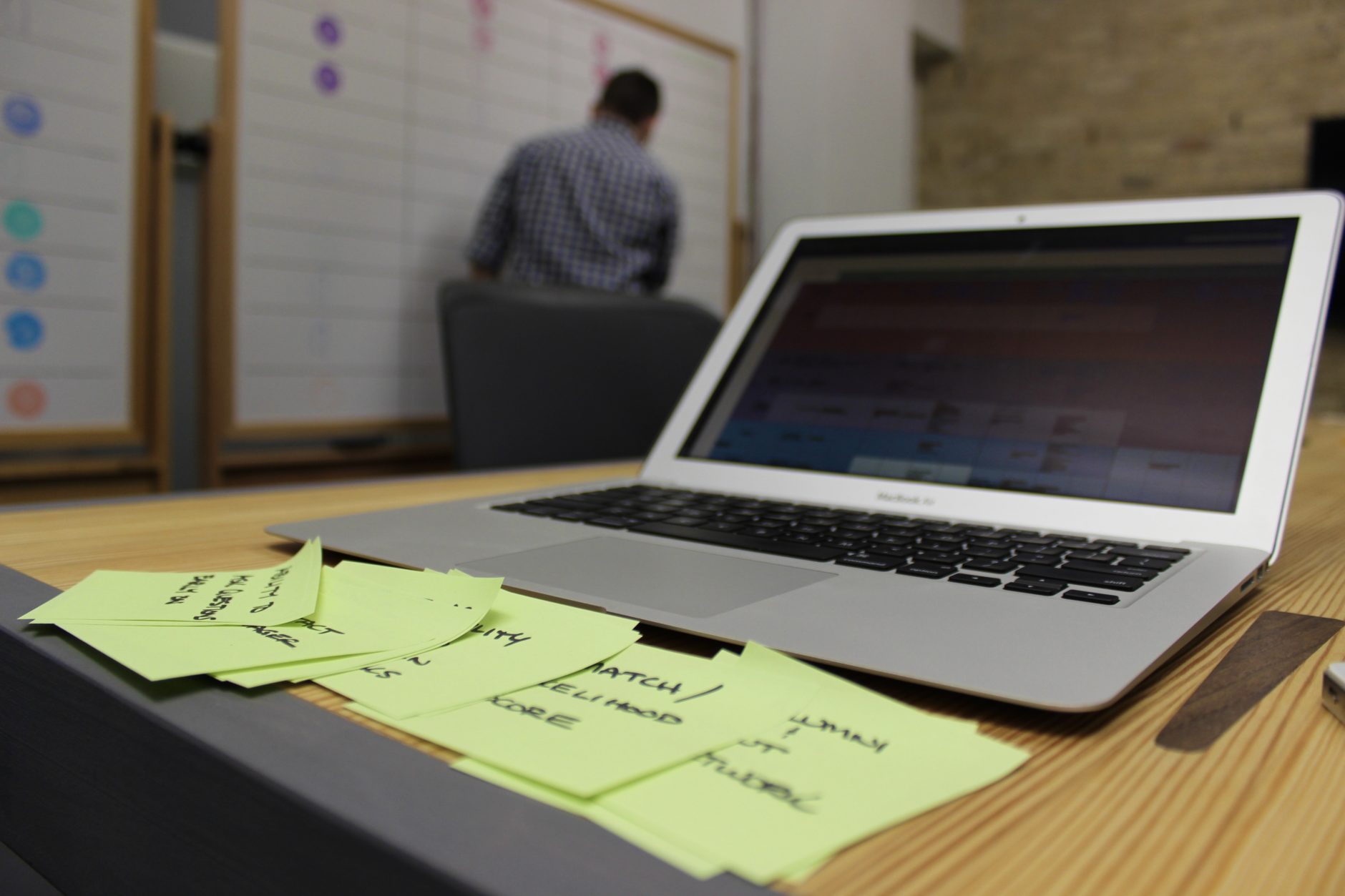
User research is a key component of every UX design process. However, conducting user research for enterprise software requires a slightly different approach than research for everyday consumer products. For one thing, it’s important to remember that the client for the product is usually not the end user of the enterprise software—the client is the manager or executive who authorizes the use of the software, while the user is the person who will actually use the software every day to get their jobs done. As designers and researchers, you need to ensure that the end user’s voice is being heard while being able to meet the needs of the client. Plus, it’s important to understand the workflows from the end user’s perspective in order to design a tool that works to get the job done in the most efficient way possible.
The goal of user research, or UX design research, is to really understand what the user’s goals are, see how the goals overlap between different roles, and challenge the stakeholders’ assumptions about how the users work and interact with the product. It’s also helpful to have the structure of the business in mind before going into user research. You have to understand the ecosystem of the business, including financial drivers and what the product does, in order to create a more productive tool.
In order to help you through your enterprise UX research, here are some tips to keep in mind to ensure effective user research.
Aim for in-context research whenever possible

It probably goes without saying, but it’s more useful to watch someone complete a set of actions than it is to only listen to them talk about completing it. Having someone only talk through their process heightens the risk of missing out on important details and misinterpreting what someone is describing. Plus, sometimes people might say that they do one thing, but in real-life you might witness them do another. By doing in-context research (aka ethnographic research), you can avoid these mistakes altogether.
With in-context, ethnographic research, you can see workarounds and other actions that users take to complete their jobs successfully. For example, when we at Fuzzy Math do ethnographic research at an office, we’re often able to visit actual end-users and immerse ourselves in their surroundings—the notes they have on their desk, the noise level and environment of the office around them, and even the coworker that popped around the corner to ask a question are all factors of how and how well the end-user is able to complete the task at hand. This sort of experience gives us insight into things we would not have seen if we only did a remote screen share or if they just talked us through their process off-site.
Seeing how users’ environments impact their work is crucial to understanding how to create better enterprise software. It allows us to better empathize with end users and gives us, as designers and researchers, a chance to take these environments into account and advocate for users by finding creative solutions to address the workarounds they might have come up with. Essentially, in-context research helps take some of the mystery out of how the product you’re designing for would be used in real life.
Have the user talk aloud as they go through their process
As mentioned, it can be really helpful to watch users go through their normal process to see what they click on and what their typical workflow looks like if you are not familiar with the product or don’t understand exactly how it is used. However, instead of just watching end users and taking a guess at what’s happening, we can learn even more if we ask the user to talk aloud as they complete each task. This way, you are able to get a peek into their minds and understand why they are doing what they are doing and what they are thinking and feeling as they do their job. This practice can reveal which parts of an operation are essential, the parts that users find frustrating, and so much more.
As they talk to you and walk you through their process, be sure to pay close attention to everything they say, as well as how they say it. Take note of what information is important on each screen and what users are looking for specifically. Consider: How do they feel about specific steps within their process? What would make this process easier for them? What pain points do users face along the way? Which aspects are time consuming or tedious? Where do errors typically occur?
Consider both the expert and new users
While preparing for your interviews and user observations, consider including a healthy mix of both new and expert users into your enterprise UX research pool. Ensuring this diversity in user perspectives will provide insights that might not have been considered if users heavily leaned more one way or another. Expert users may use the enterprise tool differently and have found specific workarounds and short-cuts that are not taught in training. It can be helpful to understand and learn from expert users so that you can later incorporate their expert knowledge with the tool into the newly designed product. Also, expert users may be more willing to adapt to the new design if they feel like they were heard during the research process. Both stakeholders and users will benefit from a product transition with less resistance.
Additionally, it’s important to understand what the training process and the workflow is like for new users. Ask your client about the training process and see if you can get access to any training videos or documents to better understand how users are taught to use the system. This way, you can go through the same procedures as a new user and figure out if there are any pain points that come up for you along the way that can be addressed. This will also give you a chance to identify any unnecessary steps. Understanding a new user’s experience can help you design a tool that’s easier to learn, and the company will benefit from an easier, more streamlined training process in the future. Not to mention, employees will be more effective and make fewer errors from the beginning once the training workflow is revamped.
Document research along the way

A lot of important insights and information can be gathered from research sessions, but it’s hard to capture it all if there’s only one person from your team in the room with a user or stakeholder. It’s helpful to have at least two team members available for user interviews so that there is one person designated as the note-taker and the research lead can focus on making observations and asking the user or stakeholder questions. Then, at the end of each interview, the research lead and note-taker can sync together on lessons learned to have a complete analysis of everything observed during their sessions. We feel like this debrief is most effective when it occurs right after the session itself because it’s easier to remember what happened 5 minutes ago as opposed to a week or more ago. If you are hosting multiple interviews in one day, try to allow for 10-15 minutes between each session to quickly discuss any interesting insights with your teammate before moving forward to the next interview or observation session. Doing this all in the same day will not only give you better notes to refer back to later, but will ultimately save you time in the long run.
Another documentation practice that can be helpful during the research process is to take photos and videos if possible. It can be helpful to document things like someone’s desk set-up or what a user’s office arrangement looks like to take the environment into greater consideration while designing—just be sure to ask your participants for permission beforehand! Additionally, if research is being done remotely, capturing the screen or recording your video calls with users and stakeholders can be helpful to refer back to so that the project lead can focus on what’s happening in the moment and refer back to the recording later.
Documentation can provide important evidence later on in the project, so it’s important to try to be thorough and organized during the research phase of the project in order to be more effective later when synthesizing and presenting to the client. It’s better to have more data and information than not enough.
These tips are just some of the ways to help designers conduct and execute successful enterprise UX research for enterprise software tools. At Fuzzy Math, we love diving deeply into the problem and ensuring we understand it before we even start designing a solution. Talking to the real users of a product and watching them work is key to uncovering insights that help to create more successful products.
Let us help you integrate UX into your next enterprise software project.